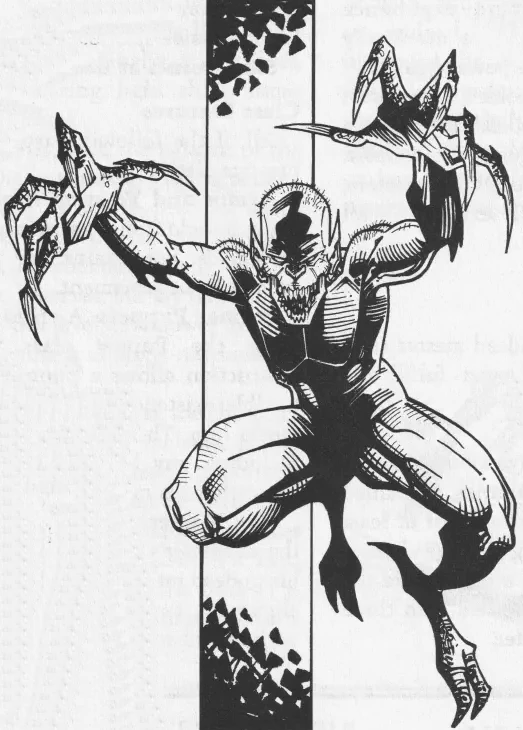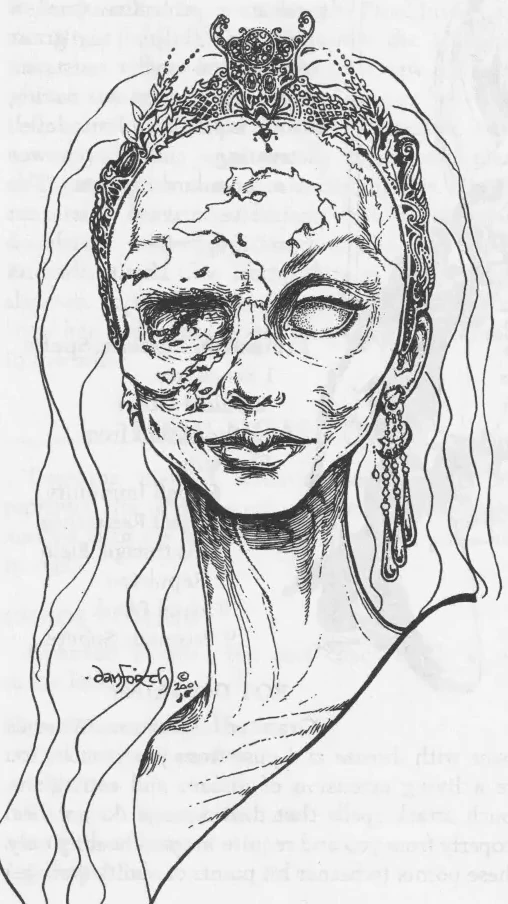Years ago, Alderac Entertainment Group (AEG) published a few "splatbooks" for 3rd Edition D&D, and one of these books was titled Undead (with Mike Mearls as a credited writer). I've been reading it lately, because I play Pathfinder and I love player options. This is my third post about the book, covering the chapter "Beyond the flesh."
NPCs
I said that some of my favourite elements of Undead are the lore sections, the fiction belonging to who-knows-what-setting. The start of Chapter 3 starts out with more of that, under the guise of describing the worship of Death.
There's stellar material here about Gehenna, which in this setting is a kind of limbo plane where souls go for final judgement. A dead soul appears on the far side of the river Styx and must cross The Last Bridge to get into Gehenna. The trip is long and perilous, and usually takes about three weeks. Here's the brilliant part: if you can rescue that soul, either with a resurrection spell or by manually infiltrating the land of the dead and extracting the soul from its journey, then that person doesn't die. But if you miss that three week window, the person is dead forever.
I love this idea. I love that the metaphysical journey of a soul progressing into the land of the undead can be bound to a countdown timer for living player characters. Three weeks is a pretty long time, and it's hard to imagine a situation in which players wouldn't be able to find a solution to death within that time. However, I just like that there's a number. The limit itself adds anxiety, even if the limit is set so high so that it can't fail. Then again, maybe it can fail. What if the cleric doesn't have the material components required for the resurrection spell? What if the only cleric in the region with the powers of resurrection has gone missing and must be rescued? Suddenly that three week window that's impossible to miss really is a race to the finish line.
In addition to Gehenna lore, there's discussion of Lochai the Reaper, Shofayt the judge, Necury the Guide, Selina the Lady of Spirits, Demortus (lord of the undead), Gnawbone (king of ghouls), and Necronius (the vampire king). These are undead dieties, and each one has an alignment and a set of domains, so players can actually use them for a cleric build.

Spells
I've often said there's no such thing as too many spells, and I stand by that. There's a handful of new spells in this chapter, including Acid blood, Mass animation, Wall of bone, and more.
I like all of these spells, and as with so much in this book, some are great for players and others are great for NPCs.
Magic items
There are a few pages of magic items, too. My technical favourite is Rod of corporeality, which causes incorporeal beings to suddently have the traits of a corporeal being. That's great design, and it feels like it's a really satisfying way to turn the tables on something that often poses a serious threat to adventurers.
My actual favourite, though, is the Sunlight stone, which does exactly what you'd think it does, but also grants a cleric or paladin a +2 sacred bonus to Turn undead attempts. I love Turn undead, and giving it a boost is nice, because I've never been unsatisfied by a successful Turn undead. It's always cool, it's always exhilarating, it always feels powerful. It's one of my favourite moments in any campaign, so ensuring its success is a nice bonus to be able to hand out as a reward.

More undead to come
There is more to this chapter, including some new artifacts. That's a lot of really fun toys to use in a Pathfinder game, or to use as inspiration for a later edition. In my next post, I'll cover Chapter 4 ("More than flesh") and Chapter 5 ("Beyond the pale").
Black and white art from AEG Undead.
Ravenloft art copyright by Wizards of the Coast, used under the fan content policy.